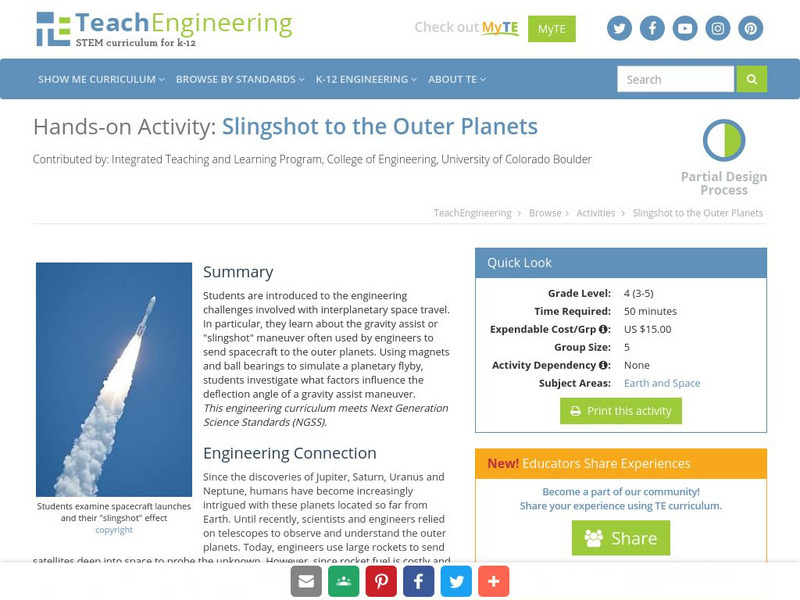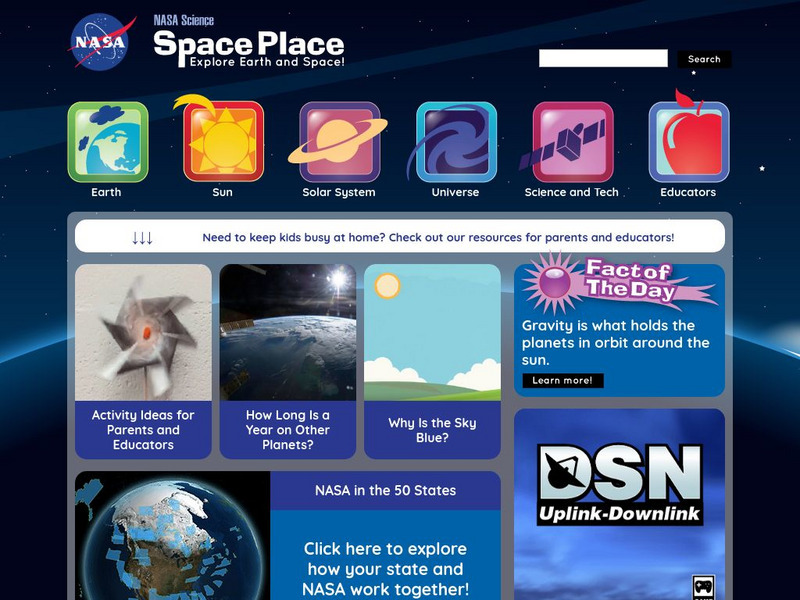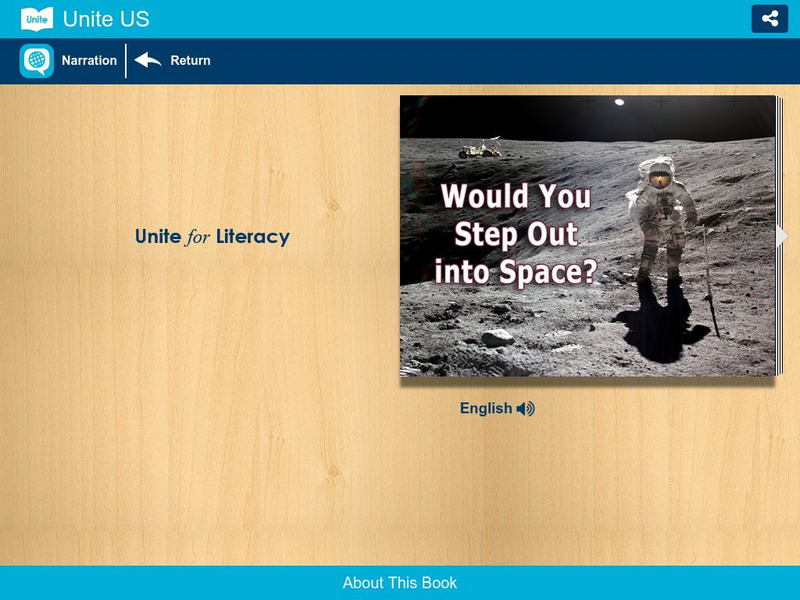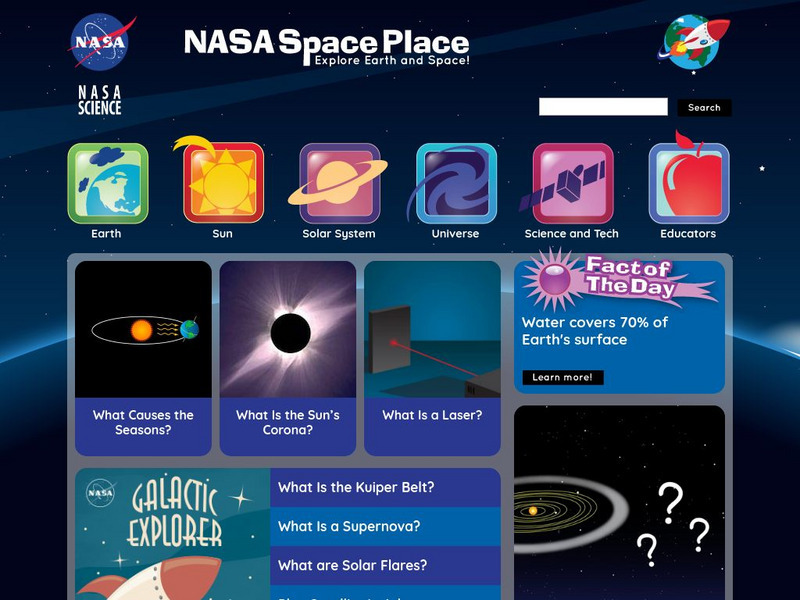NASA
Nasa: 21th Century Explorer: Why Do We Want to Study and Travel to Mars?
This article answers some of the most common questions about Mars: Why is it red? Is there water on Mars? What else have scientists discovered from spacecraft that have landed there? Also, visitors can follow links to learn more about...
NASA
Nasa: La Historia De Hoy: Today's History (Spanish)
Explore the depths of space and science comprehensive information about the meteor showers in 2004, the transit of Venus, virtual reality, and other interesting science history.
TeachEngineering
Teach Engineering: Slingshot to the Outer Planets
Students are introduced to the engineering challenges involved with interplanetary space travel. In particular, they learn about the gravity assist or "slingshot" maneuver often used by engineers to send spacecraft to the outer planets....
TeachEngineering
Teach Engineering: Space
In this unit, students first are introduced to the historical motivation for space exploration. They learn about the International Space Station and are introduced to new and futuristic ideas that space engineers are currently working on...
TeachEngineering
Teach Engineering: Space Travel
Students are introduced to the historical motivation for space exploration. They learn about the International Space Station as an example of space travel innovation and are introduced to new and futuristic ideas that space engineers are...
NASA
Nasa: Star Child: Elementary Astronomy Unit
Learn everything you can about outer space with this interactive astronomy unit. 2 levels of difficulty with modules on the solar system, the universe, other "space stuff" and a glossary of terms. Links for parents and other great website.
NASA
Nasa Human Research Program: 21st Century Explorer
This NASA research program allows students to explore space topics using science, technology, engineering, and mathematics skills. Find twelve themes to investigate through video, song, and animation. Also find links to other NASA projects.
Unite for Literacy
Unite for Literacy: Earth and Sky: Would You Step Out Into Space?
Imagines what it is like to travel to space and what you can see through the window of a spacecraft. Book includes audio narration in 14 additional languages with text in English.
NASA
Nasa: An Educator's Guide to the Engineering Design Process: K 2 [Pdf]
The NASA BEST Activities Guides were designed to teach students the Engineering Design Process. This is one of three guides targeting different grade groups. All follow the same set of activities and teach students about humans' endeavor...
National Women’s History Museum
National Women's History Museum: Mae Jemison
Astronaut Mae Jemison became the first African American woman to travel in space.
University of Wisconsin
The Why Files: High Living
The Why Files have provided an article that explores the health effects of space travel. The site focuses on life on a space station.
PBS
Pbs Teachers: Life's Really Big Questions: Planetary Problem Solving
Explore the possibility of life on planets outside our solar system. Create an extrasolar planet, then make the necessary adaptations for it to be capable of supporting human life.
Orpheus Books
Q Files: Technology: Space Transport
The story of space exploration is told from the first successful rocket built in 1926 to space probes and the International Space Station.
NASA
Nasa: Space Place: Recipe for an Eco Sphere
Finf out about NASA-created self-contained living worlds inside closed glass containers.
TeachEngineering
Teach Engineering: A Roundabout Way to Mars
Students explore orbit transfers and, specifically, Hohmann transfers. They investigate the orbits of Earth and Mars by using cardboard and string. Students learn about the planets' orbits around the sun, and about a transfer orbit from...
TeachEngineering
Teach Engineering: Destination Outer Space
Students acquire a basic understanding of the science and engineering of space travel as well as a brief history of space exploration. They learn about the scientists and engineers who made space travel possible and briefly examine some...
TeachEngineering
Teach Engineering: The Outer Planets
Students explore the outermost planets of our solar system: Saturn, Uranus and Neptune. They also learn about characteristics of Pluto and its interactions with Neptune. Students learn a little about the history of space travel as well...
Read Works
Read Works: Climbing Space
[Free Registration/Login Required] An excerpt from a speech given by President John F. Kennedy on the United States Space Effort. A question sheet is available to help students build skills in reading comprehension.
Read Works
Read Works: Space Vacation
[Free Registration/Login Required] Students read about tourists paying for vacation trips to the space station with astronauts. A question sheet is available to help students build skills in drawing conclusions.
Read Works
Read Works: Living on the Moon
[Free Registration/Login Required] An informational text that asks the reader to make predictions about visits to the moon. A question sheet is available to help students build skills in reading comprehension.
NASA
Nasa: Shuttle Carrier Aircraft
Image of the Shuttle Carrier Aircraft (SCA) as seen at Kennedy Space Center in Florida in April, 2012. The aircraft was assigned to shuttle Discovery.
NASA
Nasa Star Child: Space Travel (Level 1)
Learn about the history of space travel. Audio content is included as well as vocabulary words linked to a glossary of terms.
NASA
Nasa Star Child: Star Child
StarChild from NASA defines and describes the Solar System in a simple and easy-to-understand manner. The website is broken down into two versions for the student, grade school and junior high.
Khan Academy
Khan Academy: The Effects of Microgravity on Muscle Tissues
This is a five-question quiz pertaining to the passage "The effects of Microgravity on muscle tissues."








![Nasa: An Educator's Guide to the Engineering Design Process: K 2 [Pdf] Lesson Plan Nasa: An Educator's Guide to the Engineering Design Process: K 2 [Pdf] Lesson Plan](https://static.lp.lexp.cloud/images/attachment_defaults/resource/large/FPO-knovation.png)













